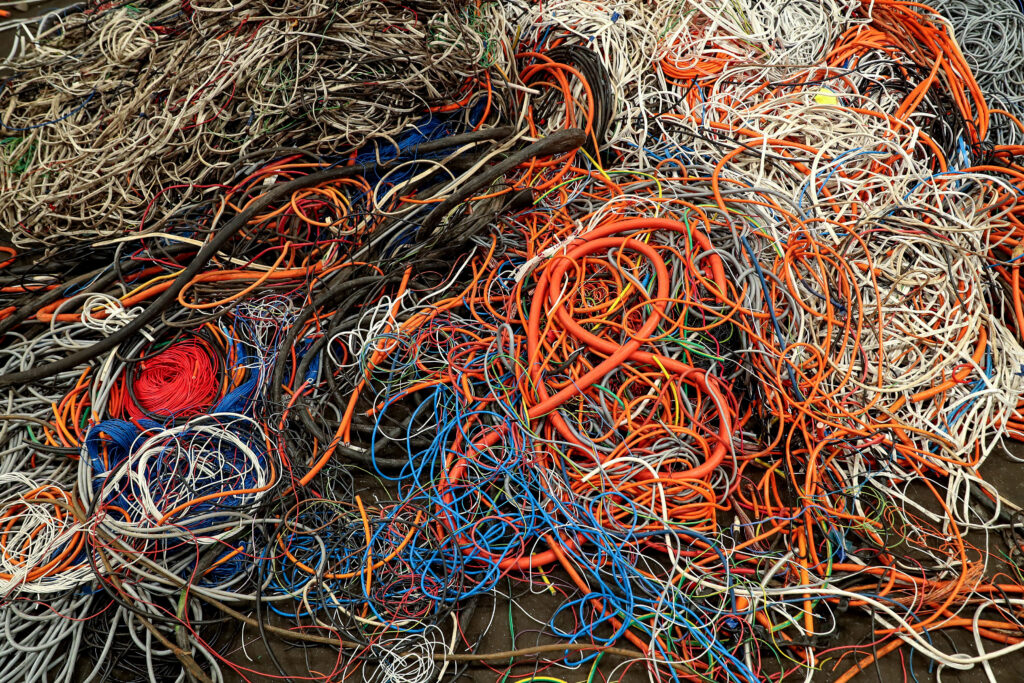
Top 3 Reasons Why Fiber Internet Is More Sustainable
For homes and businesses seeking to reduce their carbon footprint while boosting their internet speeds, Fiber Internet is an excellent option. Its sustainability story is multi-faceted.
There are immediate benefits, such as it requires fewer materials to manufacture and less energy to power than other cable options.
Plus, Fiber optic internet has already shown the potential for a broader impact on our society. One that offers substantial environmentally-friendly benefits, many of which we glimpsed over the past year.
Let’s explore three ways Fiber is an eco-friendly option for the fastest internet speeds:
1. Fiber is easier on the planet, right from the start. Fewer non-renewable natural resources are needed to manufacture Fiber optic cables than DSL or coaxial cable, which use copper wire to transmit data and require materials for jacketing and insulation.

Fiber optic cables, on the other hand, are made from silicon dioxide, which is a natural compound made from two of earth’s most abundant elements: silicon and oxygen. Rock collectors will recognize silicon dioxide as quartz, while beachgoers may know it as the main component of sand. It is certainly not rare, and there is no mining process needed to obtain it.
“Industry data indicates that the mining required to provide two kilograms of copper wire (roughly the amount you’d need for a 200-foot length of copper cable) translates into about 1,000 kilograms of environmental impact,” stated Corning, one of the pioneers of Fiber optic cables in the U.S. They added, “The creation of that same length of Fiber requires only about .06 kilograms of environmental impact.”
You don’t have to be a wiz with the metric system to recognize that’s a substantially smaller impact.
2. Fiber will be here for the long haul. One of the critical characteristics of sustainability is longevity. We must choose items that are less disposable and are designed to be long-lasting. In this area, Fiber reigns supreme.
Fiber is durable. It boasts a longer lifespan than almost any other infrastructure material, stands up to the elements far better than copper cables, and rarely requires repair. This results in less waste from disposing of damaged cables and reduced carbon emissions associated with repair vehicles.

Another factor that contributes to the longevity of Fiber optic cable is its extraordinarily high bandwidth. This means, once Fiber optic cable is installed, it has a potential working life of 25 years or more. Just think of all the generations of technology that will end up in the landfill while Fiber needs no replacing!
3. Fiber is more energy-efficient—in more than one way. Fiber networks consume less energy than copper-based systems, from day one and throughout the life of the network. Lower energy consumption means lower carbon emissions.
But here’s another “by-product” of energy efficiency. Because Fiber networks require less energy, they also generate less heat and require less cooling than copper cable networks. And less cooling means even fewer carbon emissions.
How Fiber factors into the bigger picture
We don’t need to remind you how almost everything—from work to school to grocery shopping to doctor’s visits—moved online in 2020. And all indications are that, for many, it will continue to stay that way even when it’s purely out of convenience and not a necessity.

What does this have to do with Fiber? Without high-speed broadband internet access, the near-seamless continuation of business, education, commerce, and more as an online-only endeavor simply could not have been possible.
In 2007, the American Consumer Institute Center for Citizen Research fielded a study on the use of “advanced technologies, including broadband services and telecommunications technologies,” and their impact on energy consumption and the environment.
Considering this research occurred before Zoom, Slack, Uber, Instacart, or even iPads, existed, their predictions are eerily accurate. In the executive summary of their report, they write:
“The opportunity for broadband and information technology to reduce or avoid energy use, and thus help the environment, is evident in where we work, how we shop and what we consume.
For instance, electronic communications are reducing the demand for first-class letters and newspaper subscriptions, which, in turn, reduces the need for paper, saves trees, conserves energy, pollutes less water and emits less greenhouse gases into the atmosphere.
As workers telecommute, billions of gallons of gasoline are saved. E-commerce means that less square footage of commercial, retail and wholesale facilities are needed, which saves the energy required to build and operate these facilities. As workers teleconference, business travel is reduced, sparing carbon and other emissions as well.
In short, high-speed internet services and other technologies are affecting how people shop, travel, work and use products, and, as this study shows, the benefits to the environment can be significant.”
So, while speed is certainly a factor in deciding to make the move to Fiber Internet, sustainability—both on an individual consumer and global level—should be, too.
Sources:
https://www.geo-tel.com/why-fiber-technology-is-greener/
https://www.theamericanconsumer.org/2007/10/broadband-services-economic-and-environmental-benefits/
https://blueandgreentomorrow.com/features/fiber-internet-is-key-to-sustainable-internet/
https://www.enn.com/articles/48475-on-earth-day,-give-fiber-its-due


